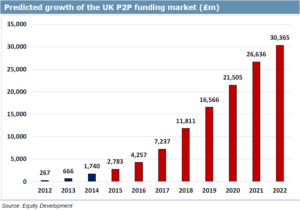ArchOver has teamed up with The Telegraph to produce a series of articles to help educate investors on the UK Peer-to-Peer Lending sector. In a brave new economic and financial world, understanding different ways of managing your money is key to success. P2P Lending can help both individuals and businesses navigate a post-Brexit world, with the reassurance that it is a secured and effective method of protecting and growing your money.
Peer-to-peer lending is becoming an increasingly popular way for businesses to get the money they need to expand.
According to recent figures from the Cambridge Centre for Alternative Finance, alternative finance business lending is 12pc of the market for lending to small businesses in the UK.
“These new channels of finance are increasingly moving mainstream,” says Robert Wardrop, executive director of the Cambridge Centre for Alternative Finance. Its 2015 report stated the sector had grown 84pc year on year and facilitated £3.2bn of loans, donations and investments.
Here are five ways in which peer-to-peer lending can help businesses.
1. Speed
Getting a loan from a high street bank can be a slow process, with many forms to fill in and documents to check. Although a peer-to-peer lender will also want to carry out checks, the process is often quicker, which can help if you want to move quickly to make an acquisition or take advantage of a growth opportunity.
2. Lack of personal guarantees
In some cases, lenders will ask directors to come up with personal guarantees when borrowing money, meaning that your own assets are tied to the repayment of the loan.
Some peer-to-peer lenders, such as ArchOver, do not ask for personal guarantees, relying instead on the assets of the borrowing business as guarantees – for example the Accounts Receivable for the company.
3. Better fit with some types of company
Not every company has a plan that makes it easy to get a bank loan or equity investment. The repayment schedule may not work with your company’s cash flow and expansion plans, for example. In some cases a P2P lender can be more flexible.
4. Value
While bank loans can be competitively priced, few companies can access them. Many companies have access to invoice financing but this is expensive and difficult to manage. P2P is usually cost-effective, easy to manage and readily available. Of course, it pays to compare the two.
5. Maintaining control
Other ways to fund your business, such equity crowdfunding or venture capital, involve giving away a proportion of your business in return for the money. P2P borrowing allows you to maintain control of the company.


